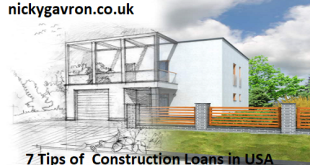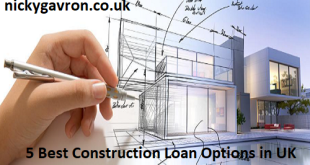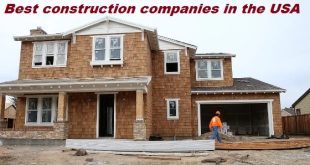Imagine the possibility of transforming your home into a place that reflects your personality better; it’s exciting, right? Welcome to the world of renovation and remodelling. Your house can represent your personal style, improve your living conditions, and increase its value in the UK’s real estate market. It might seem like a mammoth task on the surface. Still, armed with the right guidance, powerful ideas, and tailor-made strategies for the UK construction industry, you’re only a few steps away from materialising your dream home. Let’s jump into some innovative renovation and remodelling ideas.
“In the middle of difficulty lies opportunity.” – Albert Einstein
No matter how challenging or complicated your renovation project might feel at the onset, always remember this quote. Opportunities for creativity and innovation abound, even in the face of renovation difficulties.
A Peek into Possible Renovation and Remodeling Venues
- The heart of the home: The kitchen is called the heart of the home for a reason. An excellent place to start your renovation and remodelling journey.
- Sanctuary of serenity: Your bathroom can transform into a personal spa with the right remodelling touches.
- Living spaces: A revamp of your living room and bedroom can change the entire aesthetics of your home.
- Outdoors: Don’t forget your garden, patio, or deck. Outdoor spaces hold immense potential for transformation.
In the following sections, we’ll delve deeper into each of these venues, offering you practical and innovative ideas for your renovation adventure. Together, we can take the very first steps to make your dream home a reality.
Smart Home Technology Integration
Renovating or remodeling your home in the UK involves more than just fresh coats of paint, new furniture and tweaked floor plans. It’s about embracing new technologies that can significantly improve quality of life. This is where smart home technology integration comes into play.
By incorporating smart home tech into your renovation, you can add great value to your home, making it more secure, energy-efficient, comfortable, and overall, more connected. Not sure where to start? We’ve broken down some of the most popular smart devices and systems that are being integrated into UK homes today:
- Smart Thermostats: Advanced programmable thermostats like Google Nest or Hive offer a wealth of features that make it easier than ever to control your heating and cooling. Some models even learn your routines and adjust accordingly, helping to reduce energy usage.
- Smart Lighting: With smart bulbs, you can control your lights remotely via a connected device or, set them to run on a schedule. The Philips Hue lighting system, for instance, allows users to adjust brightness, color temperature, and even chose from millions of colors for mood lighting.
- Home Security Systems: Home security has taken a big leap with the advent of smart tech. Systems like Ring allow you to view real-time video of your home from your smartphone, no matter where you are in the world.
- Smart Door Locks: Smarter, safer, and more convenient than a traditional key, smart locks allow you to lock and unlock your door using your phone. You can also give temporary access to guests or service providers.
- Home Automation Systems: Platforms like Amazon Alexa or Google Home are being used to streamline all of these smart devices, enabling you to control them with simple voice commands.
By carefully selecting the smart-tech devices that meet your needs, you can achieve a combination of comfort, convenience, security, and savings worth a significant investment.
Note: Before implementing any new smart tech device in your home, ensure it is compatible with any existing systems you may have. It’s also imperative to secure your connected devices to protect against hacking or other security risks.
So, ready to take that next step into the future with your new smart home? Don’t be daunted; by taking one step at a time, before you know it, you’ll be living in the home of tomorrow, today. Next in our guide, we’ll delve into some creative approaches to eco-conscious renovation ideas!
Sustainable Solutions for Renovation and Remodeling
In the era of climate change and sustainable living, renovations and remodeling projects in the UK construction sector are increasingly focusing on eco-friendly designs and materials. These not only improve your home’s energy efficiency but also significantly reduce your carbon footprint. Moreover, integrating sustainable solutions can increase your property’s value, making it a beneficial move on multiple fronts.
Energy-Efficient Home Appliances and Systems:
When looking into renovating your home, consider investing in energy-efficient appliances and systems. These devices, while they might seem costly upfront, can save significant amounts of energy and money in the long run. Items such as energy-rated washing machines, fridges, and LED lighting systems fall into this category.
Solar Panels and Other Renewable Energy Sources:
Another key area of sustainable renovations is the integration of renewable energy sources, like solar panels, into your home design. In addition to reducing your electricity bills, you may also be eligible for government incentives for including these in your upgrades.
Insulation:
Proper insulation is a crucial aspect of creating a sustainable home. Good insulation will keep your home warm during winter and cool in summer, minimizing your reliance on heating and cooling systems. There are various eco-friendly insulation materials, such as sheep’s wool and wood fiber.
Note: Always consider the lifecycle of your selected products. Opt for materials and products that have a long usable life and can be recycled at the end of their lifespan.
Water Conservation Measures:
From installing dual flush toilets to water-saving showerheads, there are numerous remodeling techniques you can employ to conserve water within your home. Also, consider integrating a rainwater recovery system into your renovations; this captured water can be used to water your garden or flush your toilets.
In conclusion, embarking on a sustainable renovation journey isn’t just good for the planet. It can also improve the energy efficiency of your home, make it more comfortable and potentially increase its market value. So why not make your next home refurbishment project a green one?
Creative Use of Space in Urban Environments
Space is often at a premium in urban environments. This reality establishes the need for creativity, finding ways to make the most of the available square footage. Let’s dive in and explore some great ways the UK construction industry is meeting this challenge head-on.
Firstly, the introduction of flexible spaces is a game-changer. Dual-purpose rooms bring a lot of value to a property. Think about it – a home office that converts to a guest room or a kitchen that doubles as a dining room. This functional and stylish feature maximises space and delivers a unique dynamic to any home.
Consider incorporating foldable furniture or movable wall panels to optimise space usage. How cool would it be to change your room’s function by just moving a few pieces around?
The UK construction industry is also embracing the concept of open floor plans. Gone are the days of compartmentalised rooms that hold just one function. Now, the trend is towards creating a bright, airy space that flows from one activity to the next. An open floor plan allows for better use of space, increased natural light, and enhanced interaction.
But what about storage? Storage units aren’t just confined to garages, attics and basements anymore. British constructors are creating multi-functional storage spaces within furniture, stairs, and walls. Hidden drawers, high shelves and under-the-stair cupboards are being made to look natural and blend with the existing decor. This certainly adds charm and functionality to any urban renovation and remodeling project.
As height restrictions become tighter in urban environments, digging down is becoming more prevalent. Converting the basement into a habitable space not only extends your living area but also increases the overall value of your property. Whether it’s a home cinema, a gym, or a wine cellar, basement conversions offer limitless remodeling possibilities.
“Every inch in a home is worth its weight in gold. Getting creative with your space can transform it from average to exceptional.”
To wrap up, remember that renovation and remodeling is not only about adding value, but also about creating an environment that resonates with your lifestyle and spirit. Let the constraints of urban living push you to innovate and create a unique space that truly feels like home.
Incorporating Biophilic Design Elements
Biophilic design is a concept that’s gaining significant traction in the UK construction industry, particularly in renovation and remodeling projects. This architectural approach seeks to incorporate natural elements, structures and patterns into built environments. If you’re thinking about renovating or remodeling, this trend might just be what you need to spice up your space.
But what does it mean to incorporate biophilic design elements into your project? Essentially, it means creating a more holistic and sustainable built environment that improves our connection with nature, enhancing well-being and productivity. How can this be done? Let’s dive into some creative ideas
- Use of Natural Materials: Incorporating materials such as stone, wood and other elements directly from nature adds an organic touch.
- Implementing Natural Light: Maximizing the use of natural light can not only save energy, but also create a warmer, more welcoming environment.
- Indoor Plants: A touch of green with indoor plants can enhance air quality and bring a feeling of the outdoors inside.
- Incorporation of Water Features: The use of indoor fountains, aquariums or even water walls can add a tranquil, relaxing element to a space.
However, it’s important to consult with a professional to create a design that balances beauty, functionality and sustainability. Here are a few renowned UK-based firms that specialize in biophilic design:
| Company Name | Location |
|---|---|
| Oliver Heath Design | Brighton |
| Interface | Birmingham |
| Building With Nature | Gloucestershire |
In conclusion, the integration of biophilic design elements in renovation and remodeling projects is more than just a trend – it’s a healthy and sustainable approach that could potentially revolutionize UK’s construction industry. Remember, every change starts with a single step and your renovation project could be that step towards a more sustainable lifestyle.
“We never know the worth of water till the well is dry.” – Thomas Fuller
The Rise of Prefabricated Construction
As you explore renovation and remodeling options, the rise of prefabricated construction is impossible to ignore. Originating from the UK, this incredible innovation lends itself to creating cost-effective, sustainable, and beautifully designed spaces with a dramatically reduced construction timeline.
Prefab construction, or modular construction, as it’s often called, involves the process of building sections of a property in a factory-based setting before being transported and assembled at the final location. It’s a method that’s quickly gaining popularity, and here’s why:
- Efficiency: With pieces of the project being constructed simultaneously, the timeline from concept to completion is significantly shrunk compared to traditional building methods.
- Controlled Environment: The off-site nature of this construction method means the building process isn’t reliant on the whims of the weather—a common disruptor of more traditional construction schedules.
- Cost-Effective: Efficient use of materials and streamlined processes could lead to significant cost savings, more predictability in budgeting, and less wastage.
Leveraging the benefits of prefabricated construction methods can breathe new life into a neglected space or help create a brand-new structure tailor-made to your specifications. Here’s how prefab options can fit into your next renovation or remodeling project.
Choosing the Right Prefab Solution
Panels vs. Modules: Prefab construction offers two main methods; panelization and modularization. With panelization, walls, floors, and roofs are delivered to the site in panels and assembled. In modular construction, entire rooms or sections of a building are constructed off-site and simply slotted into place. Understanding which method suits your needs best could influence the design decisions and planning for your project.
Implementing Sustainability
With a rise in the demand for low-impact building methods, many prefab manufacturers are adopting renewable materials and energy-efficient designs into their processes. This not only lowers the carbon footprint of your build but could potentially save you money in the long term in energy expenses.
The future of the UK construction industry is certainly exciting, and it’s clear that prefabricated construction will continue playing a defining role. As you approach your next renovation or remodeling endeavor, be sure to explore the myriad of possibilities prefab can offer.
Innovative Materials and Finishes in Renovation
When it comes to renovation and remodeling, the choice of materials and finishes can make a dramatic difference. No longer are homeowners limited to traditional brick-and-mortar options. Advances in technology and design have led to a multitude of innovative materials that can add uniqueness, functionality, and sustainability to any project.
Let’s delve into some of these groundbreaking options:
- Composite materials: Composites are becoming increasingly popular due to their durability and versatility. These materials, made from a mixture of wood, plastic, and other materials, can mimic the look and feel of various natural materials, offering homeowners a wide range of aesthetic options.
- Recycled materials: Recycled glass countertops, reclaimed wood floors, recycled metal roofing – the options are unlimited when it comes to repurposing materials. These choices are not only eco-friendly, but they also give your renovation project a unique, custom look.
- Smart glass: Smart glass can change from transparent to opaque with the flick of a switch, providing privacy when needed. This technology is especially useful in bathrooms and other areas where privacy is appreciated, but natural light is desirable.
- Metallic finishes: Metallics add a modern touch to any home, and their reflective qualities can help light up a room. Matte, brushed, and glossy finishes all offer different aesthetics and can be used to create a cohesive design throughout the home.
Choosing innovative materials and finishes can enhance the function and aesthetics of your home, making it a more enjoyable place to live and potentially increasing its value. While it’s exciting to see the array of materials available, it’s important to consider their sustainability and how they align with your personal style and lifestyle needs.
Remember, it’s your space – you have the freedom to express yourself and create a home that reflects who you are and what you value. So, why not embrace innovation and enhance your home renovation project with these cutting-edge materials and finishes? Your space will be truly one of a kind.
Embracing Minimalism in Renovation Design
Minimalism in renovation design represents a shift towards simplicity, where less is more. This design approach is all about maintaining functionality while reducing clutter and visual chaos. The key is in prioritizing what’s necessary and eliminating excess, creating a sense of tranquility and order.
But what does this mean for renovation and remodeling ideas in the UK construction industry? It necessitates a new perspective on design and construction that focuses on the essential parts of a building project, whether that’s the function of the space, the materials used, or the aesthetic appearance.
“Embracing minimalism in renovation design means prioritizing functionality, reducing clutter, and creating a sense of tranquility and order.”
Adopting a Minimalist Design Approach
When adopting a minimalist design approach, it’s crucial to start with a clear vision of what you want the space to achieve. This could mean focusing on natural light, choosing a monochromatic or bi-color palette, or even deciding on a single standout piece of furniture or artwork around which the room is designed.
Materials and finishes used should complement the architecture of the space, rather than compete with it. This might mean using fewer materials, but of higher quality. Also, the color scheme tends to lean towards neutral colors that add to the serene and calming ambiance of the space.
The Benefits of Minimalism in Renovation
- Reduced clutter: A minimalist renovation helps to eliminate clutter and promote a more organized, cleaner space. This can enhance the usability and functionality of the room.
- Saves money: Minimalism can also be a cost-effective approach, reducing expenditure on unnecessary items or features.
- Enhanced focus: By removing distractions, minimalist design can enhance your focus on important things.
- Easy to maintain: With less clutter and fewer objects, minimalist spaces are generally easier and quicker to clean and maintain.
Final Thoughts
In conclusion, embracing minimalism in renovation design is a growing trend in the UK construction industry that can provide numerous benefits in terms of cost, function, and aesthetics. It’s all about finding balance and harmony through simplicity, while still delivering on the specific needs and wants of the homeowner. So next time you’re managing a renovation, consider the value and beauty of simplicity. After all, sometimes less really is more.
FAQs :
1. What does integrating smart home technology into renovation projects entail?
Smart home technology integration involves embedding technologies into your home that make it more efficient, sustainable, and convenient. This could include things like automated lighting and heating systems, home security technologies, or voice-activated appliances.
2. How can I make my renovation or remodeling project more sustainable?
Use of sustainable materials, energy-efficient appliances and fixtures, and smart home technologies that reduce energy consumption are all strategies that can increase the sustainability of your project.
3. Can prefabricated construction be part of a renovation or remodelling project?
Yes. Prefabricated construction can be used to add new elements to a home or to replace existing ones. This method of construction is often faster and more cost-effective than traditional methods, as components are built off-site and just need to be assembled on site.
4. What is a biophilic design element?
Biophilic design involves the incorporation of natural elements into the built environment. This could include natural materials like wood and stone, living plants, or features that mimic natural shapes and patterns. The aim is to enhance the connection between people and the natural environment.
5. What do you mean by innovative materials and finishes?
Innovative materials and finishes can offer a range of benefits, from improved aesthetics to increased functionality. Examples include tiles made from recycled materials, touch-sensitive faucets, or self-healing concrete that can repair small cracks by itself to prolong its lifespan.
6. How can I adopt a minimalist design approach in my renovation or remodeling project?
A minimalist design approach focuses on simplifying the space. This typically involves reducing the number of items in each room, choosing monochromatic or neutral color schemes, and opting for furniture and features with clean, simple lines.








